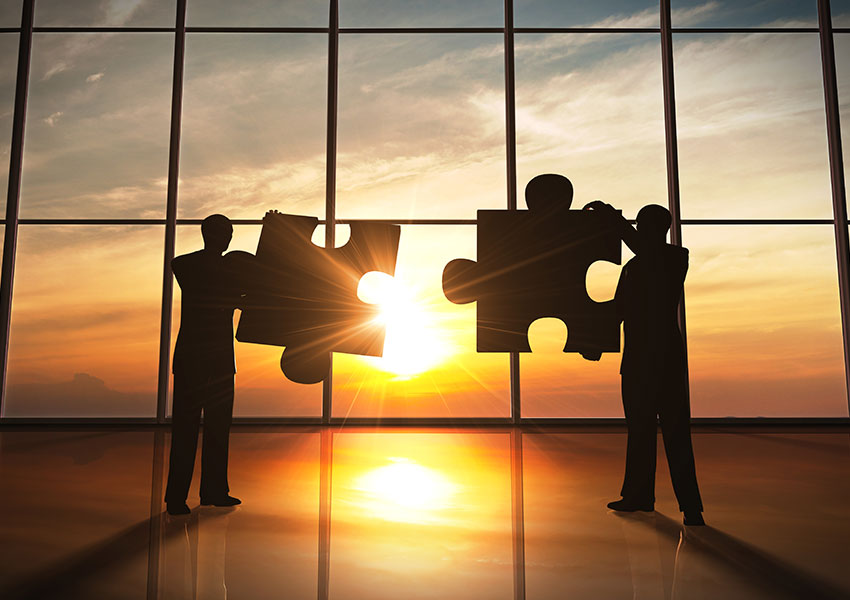Project management is everywhere. It is no longer reserved only for professional project managers
Instead, tech team leads find themselves filling those shoes, and so do other team managers.
Everyone’s a project manager today, but project management itself is flawed.
In this article, we’ll explain what the main problems with today’s project management are, and how to fix them.
Let’s take a look!
The Problem with Project Management
 When we talk about leading causes of project failure today, chances are that most of us think the main problem is the budget.
When we talk about leading causes of project failure today, chances are that most of us think the main problem is the budget.
If it’s not the budget, then it’s the scope. We bit off more than we can chew.
In reality, one third of all projects fail due to communication breakdowns.
The second reason projects fail is also closely related to the practice of project management itself.
It is the lack of visibility.
Today’s projects involve numerous stakeholders; from the project manager itself, to teams, clients, and top management.
Everyone has to get a say and despite all of the tools we’re using, it seems like no one’s really sure what’s going on at any given moment.
This problem is only exacerbated when enterprises or teams work on multiple projects at the same time.
It’s not a rare occurrence to hear a CEO say: “I’m not really sure how many projects we’re working on right now, or what’s happening.”
And that’s a major problem.
When project managers can’t obtain feedback from the stakeholders, it results in delayed decision making. In turn, that results in a lot of projects failing.
The third cause of project failures is poor planning.
 While following project management practices should, in theory, help us organize our projects better, that just doesn’t happen.
While following project management practices should, in theory, help us organize our projects better, that just doesn’t happen.
Task management is more akin to sticking a post-it note to our mirrors and calling it a day.
Not even the tools we use help.
Tools Don’t Fail Us Now
The fact that project management is broken due to communications, lack of visibility and poor planning might have been understandable in 1970s.
However, project managers are increasingly asking themselves how this is possible when we have so many tools at our disposal.
So let’s consider what usually happens when a project is initiated in the 21st century:
- First, a project manager has to use one tool to communicate with a client and define their requirements, expectations and deliverables.
- Then, they have to define all the resources they need and create a work breakdown structure or a similar document that will help them define what the project will look like in practice. Of course, this is done through a separate tool and then uploaded to a storage app and shared.
- Next up: our contemporary project manager has to create a project scope statement in a different tool, while referencing the conversation and (most likely) literal, handwritten notes.
- All of this is then sent to top management for approval. Usually through email. As if inboxes aren’t crowded nowadays.
- When they get the go-ahead from the top, our project manager has to bring the entire team on board and update them on what they’re doing. Cue: frenzied search for all the documents that have been stored across a variety of project management tools.
- The project begins (by a stroke of luck and not much else), and it’s time for task management. Who does what? When should it get finished? What are task dependencies? If Mary doesn’t finish this in time, will Joe finish his task in time?
- There are problems – there are always And our project manager doesn’t just have to juggle project management, but they also have to take care of team management by coaching their team members, and addressing and resolving issues, many of which could’ve been avoided.
Now, a typical project manager uses Google Drive or Dropbox for permanent documents. Then, they use communication tools like Slack to manage and communicate with their team. At the same time, they keep the conversation going with top management and clients through email. Task management is done through Trello, and the team likely shares files through InVision.
All in all, that’s a bucketload of tools.
At the end of the day, a contemporary project manager has to spend more time managing their tools than managing their project.
And that’s a major problem if there ever was one.
As a species, we’ve always strived towards creating ultimate tools.
We’ve digitalized our archives because paper was costly to store and even costlier to maintain.
We use our phones as the central hubs of personal life management. They hold our banking apps, our communication with friends, family, and work colleagues.
So why can’t project management come with an ultimate tool that streamlines every aspect of the work?
Why do we have to keep paying for numerous tools that still aren’t getting the job fully done? And these aren’t just costs in the sense of subscriptions, but in the sense of the time lost managing them.
In the sense of our teams falling apart because there are too many tools to keep track of to do actual work.
On average, we waste over two hours every day just trying to find the information we need to do our jobs properly.
Multi-tasking is costing us our health, psyche and productivity.
And on top of that, we’ve never been more stressed.
It’s time for a change.

How to Fix Project Management
If we’re taking a holistic look at our work lives, we need to take a holistic look at project management.
If we define the three key aspects of project management, we’ll see that it includes:
- Communication (internal – with our teams, external – with clients and top management)
- Organization
- Collaboration and team management
Now, our projects can no longer take months as may have been the case for our parents and grandparents’ generations.
They have to be done as soon as possible.
The best possible solution are the right tools.
Project management tools aren’t just replacements for our work as project managers, or our work as project teams.
The tools are the support, the logistics that we sorely need.
And if we really want to fix project management and complete our projects in time (without headaches), it’s time to find…
The Best Project Management Tool
Now that we know what the leading causes of project failure are, and what the main aspects that have to be covered with a PM tool are, it’s time to define how we’ll recognize the best project management tool:
- It improves efficiency – it’s the ultimate solution which includes: communication, collaboration and organization
- It reduces costs – by having everything in the same tool, teams reduce their app sprawl costs
- It saves time – if team members and project managers can find all the information they need in one tool, they won’t waste time trying to find the right information
Now, Slack can’t be the best project management tool.
We may use it for communication but it lacks task boards and visual feedback which are used for organization and collaboration, respectively.
Trello’s out of the question, too. It lacks the communication aspect.

The Solution: Heycollab, the Ultimate Project Management Tool
Heycollab is a newcomer in the project management software market, but it’s a feisty one.
It’s driven by the desire to give teams support – not more tasks they’ll have to juggle.
It’s a complete solution with features such as:
The entirety of the project management process is organized within one central virtual workspace.

From there, teams can simply click on the right buttons and they’ll be taken to the team chat, collaboration hub, or their task boards.
Everything is displayed clearly, so there can be no problems with visibility. Task boards offer process and progress insight at a glance.
Team chats make it easy to discuss tasks and projects, and offer feedback. All it takes is a click, and team members will automatically attach the right files, mention their colleagues, and discuss what needs to be done.
Finally, there’s no need to use InVision for visual feedback.
All of it happens within one app – within Heycollab.
And when we have the communication support readily available, as well as access to task boards that make planning easier than lounging by the beach, there’s no reason for our projects to fail.
While project management still has a long way to go, a centralized solution like Heycollab is the first step in the right direction.

